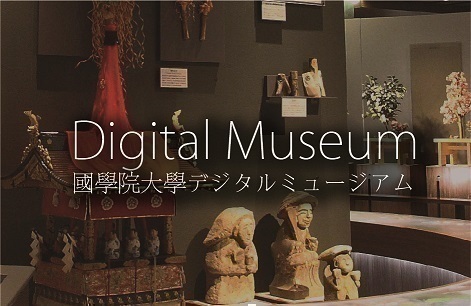- トップ
- Encyclopedia of Shinto
- Engishiki
Encyclopedia of Shinto
| Main Menu: | |
| Links: |
詳細表示 (Complete Article)
| カテゴリー1: | 3. Institutions and Administrative Practices |
|---|---|
| カテゴリー2: | Ancient |
| Title | Engishiki |
| Text | Procedures of the Engi Era. Engishiki is a compendium of rules and procedures for implementing ritsu (penal codes), ryō (administrative codes), and kyaku (supplementary laws). It comprised fifty scrolls, and approximately three thousand and some hundreds of articles. Engishiki, the simultaneously compiled Engikyaku, the previously issued Kōnin kyakushiki (820, hereafter Kōninshiki) and Jōgan kyakushiki (869-871, hereafter Jōganshiki) are collectively called the "kyakushiki of the three reigns" (sandai kyakushiki). Among these, only Engishiki is extant in nearly complete form. Because of its extremely detailed provisions, Engishiki is an excellent source concerning all matters related to aristocratic government in the Heian period. Following the order of Emperor Daigo (r. 897-930), compilation of Engishiki began in the eighth month of 905. It was completed and submitted to the sovereign twenty-two years later, in the twelfth month of 927. However, revisions were still being made, and Engishiki only went into effect forty years later, in the tenth month of 967. This delay was probably also due to the fact that since so much of the content of Engishiki was already mentioned in Kōninshiki and Jōganshiki, there was no need to hurry promulgation. The chapters of Engishiki are arranged and distributed to correlate with the agencies of the ritsuryō bureaucracy (two councils and eight ministries): Chapters One through Ten deal with the Jingikan (Department of Divinities); Chapters Eleven through Forty, the Dajōkan (Council of State) and its eight ministries; Chapters Forty-one through Forty-nine, other offices, such as the Bureau of Royal Police and the Bureau of Military Storehouses; and Chapter Fifty, miscellaneous procedures. Rules concerning the Jingikan are voluminous and make up nearly one-third of Engishiki. Other ministries to which many rules and regulations pertain are the Ministry of Inner Palace Affairs (Nakatsukasashō), the Ministry of Popular Affairs (Mimbushō), and the Imperial Household Ministry (Kunaishō). The contents of the first ten chapters on kami worship are as follows: Chapters One and Two, Rites of the Four Seasons; Chapter Three, Extraordinary Rites; Chapter Four, The Grand Shrines of Ise (Ise Jingū); Chapter Five, The Bureau of the Consecrated Princess (saigū); Chapter Six, The Office of the Consecrated Princess of the Kamo Shrines (saiin); Chapter Seven, The Succession and Great Rite of Tasting New Fruits (Daijōsai); Chapter Eight, Prayers to the kami (norito); and Chapters Nine and Ten, The Register of Deities (Jinmyōchō). The chapters on the Rites of the Four Seasons provide protocols for various annual festivals, especially rules on the variety and quantity of offerings. The chapter on Extraordinary Rites lists rules on offerings for unscheduled and occasionally performed rites such as those for the Thunder Deity Festival (kantoki no kami matsuri), focusing particularly on regulations pertaining to ritual materials. The chapter on the Grand Shrines of Ise lists regulations related to the Inner and Outer Shrines of Ise. The chapter on the saigū compiles procedures to be followed by the princess who served the deity of Ise, her consecrated palace, and the bureau that administered her office. The saiin chapter likewise deals with the princess who served the deities of the Kamo Shrines. The chapter on the Daijōsai provides a detailed set of protocols for this important rite, which was performed only once in an emperor's reign following his accession. The norito chapter lists twenty-seven prayers used for liturgical purposes. Finally, chapters nine and ten (the Jinmyōchō) list the names of "official shrines" (kansha) across the realm which received offerings from the court at the annual spring festival, the Ki'nensai. There were two thousand eight hundred sixty-one such shrines, while the "heavenly and earthly deities" (tenjin chigi) enshrined in them numbered three thousand one hundred thirty-two. These shrines were enumerated by province and district. Shrines included in Engishiki prided themselves on their status as shikinaisha ("shrines listed in Engishiki "). The kokugaku (National Learning) scholars of the early modern period (Edo period, 1600-1868) focused their studies on Engishiki chapters concerning the norito, the Register of Deities, and royal mausoleums (in Chapter Twenty-one). Their commentaries on these chapters include Kamo no Mabuchi's Norito kō (On Norito), Suzuki Shigetane's Engishiki norito kōgi (Lectures on Engishiki Norito), and Ban Nobutomo's Jinmyōchō kōshō, (Studies on Jinmyōchō). Prior to these, aristocrats in the classical and the medieval periods honored and transmitted Engishiki because they saw it as their primary source for court protocols and annual rites. — Takashio Hiroshi |




